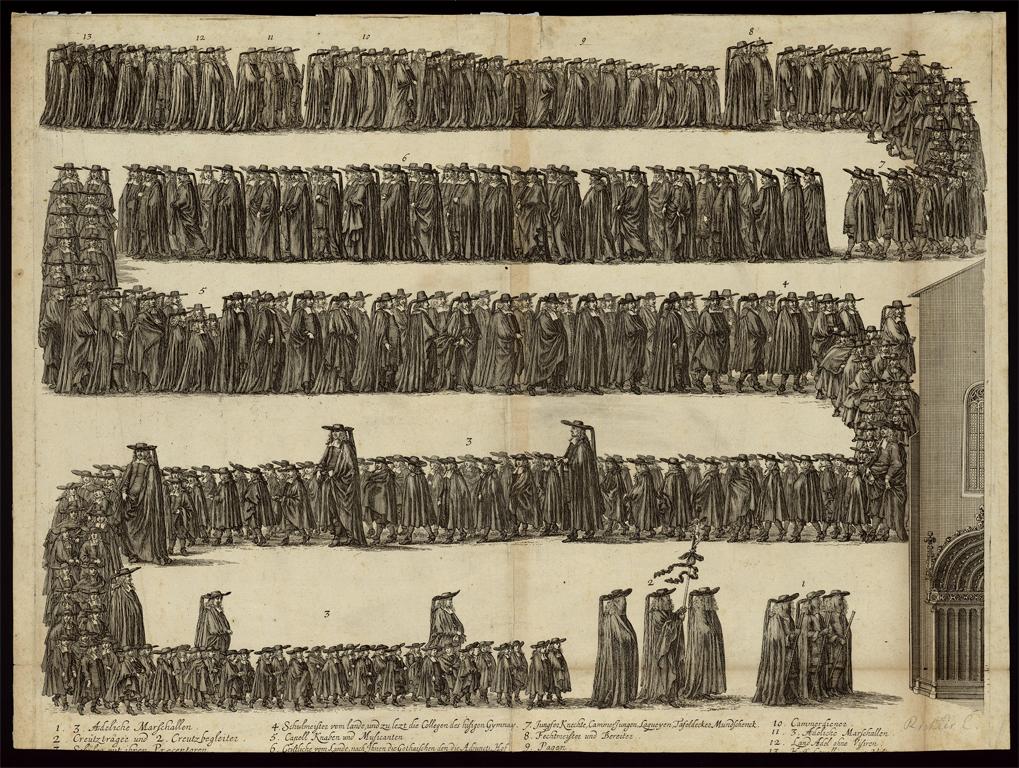Source

Source: Funeral procession for Ernst I, Duke of Saxe-Gotha, etching attributed to Christian Richter, c. 1675. Harry Ransom Center University of Texas at Austin
Duke Ernst I, known as Ernst the Pious, took the throne in 1640 amid the chaos of the Thirty Years’ War. By the end of his reign, he had restored order and prosperity to his realm by launching ambitious educational initiatives and by enforcing stern religious discipline among his subjects. A devout Lutheran, Ernst I was celebrated during his long reign, and memorialized for centuries afterwards, as the ideal Christian prince. Staging elaborate state funerals for departed rulers were an important aspect of Baroque dynastic rule, and printed depictions like this, accompanied by florid expressions of piety and lamentation, were quite common.

Source: Funeral procession for Ernst I, Duke of Saxe-Gotha, etching attributed to Christian Richter, c. 1675. Harry Ransom Center University of Texas at Austin
UT Austin